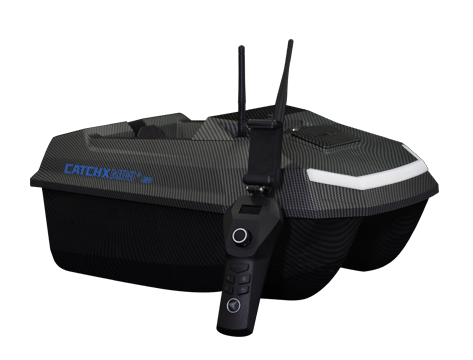How GPS Technology Works in Fishing Bait Boats
In the ever-evolving world of fishing technology, GPS (Global Positioning System) has emerged as a crucial tool that revolutionizes the way anglers approach their sport. Fishing bait boats equipped with GPS technology are redefining precision fishing, allowing users to enhance their efficiency, accuracy, and overall fishing experience. This article delves into the intricate workings of GPS technology in fishing bait boats, offering a comprehensive exploration of how it contributes to a successful fishing expedition.
Understanding GPS Technology
What is GPS?
GPS (Global Positioning System) is a satellite-based navigation system that provides accurate location information anywhere on Earth. Developed by the United States Department of Defense, GPS comprises a network of approximately 30 satellites orbiting the planet. These satellites transmit signals to GPS receivers, which process the data to determine the precise location of the receiver on the Earth's surface.
How GPS Functions
GPS operates through a process called trilateration. The GPS receiver calculates its position based on signals received from multiple satellites. Each satellite transmits a signal containing its location and the exact time the signal was sent. By comparing the time it took for the signal to reach the receiver with the known speed of the signal (the speed of light), the receiver can determine the distance from each satellite. With signals from at least four satellites, the receiver can pinpoint its exact location through mathematical calculations.
The Role of GPS in Fishing Bait Boats
Precision Placement of Bait
One of the most significant advantages of GPS technology in fishing bait boats is its ability to precisely place bait. Traditional baiting methods often relied on estimation and guesswork, which could lead to inefficiencies and missed opportunities. With GPS, anglers can conctrol their bait boats by app to deliver bait to exact coordinates, ensuring that their bait is positioned precisely where the fish are likely to be. This precision increases the likelihood of attracting fish.
Efficient Navigation and Route Planning
GPS technology enables anglers to plan and execute efficient routes for their bait boats. Navigation and route planning are streamlined, as GPS systems provide real-time information on the boat’s location and help avoid obstacles. This feature is particularly beneficial in large water bodies where manual navigation can be challenging. By setting the task or route in the app of the bait boat with GPS, anglers can save time and effort, making their fishing trips more productive and enjoyable.
Tracking and Monitoring
Tracking and monitoring are critical aspects of successful fishing. GPS technology allows anglers to monitor the movements of their bait boats in real-time, ensuring that the bait is being deployed as intended. Additionally, many GPS systems in bait boats come with features that enable users to set Homepoint, such as the CatchX mini GPS. This functionality can make sure the bait boat returns successfully and avoid losing the boat.
Data Logging and Analysis
Modern GPS-equipped bait boats often include data logging capabilities. This feature records information about the boat’s location, baiting patterns, and environmental conditions. Anglers can analyze this data to identify patterns and trends, leading to more informed decisions about baiting strategies and fishing locations. Data logging enhances the effectiveness of future fishing trips by providing insights into successful techniques and conditions.
Key Features of GPS in Fishing Bait Boats
High-Accuracy GPS Receivers
Fishing bait boats equipped with high-accuracy GPS receivers ensure precise location tracking and bait placement. Advanced GPS receivers offer superior signal acquisition and processing, reducing errors and improving the reliability of location data.
User-Friendly Interfaces
The user-friendly interfaces of modern GPS systems make it easy for anglers to operate their bait boats. Intuitive controls and clear displays allow users to quickly set waypoints, adjust settings, and monitor the boat’s position without requiring extensive technical knowledge.
Integration with Other Technologies
Many GPS-equipped bait boats are designed to integrate with other technologies, such as fish finders and sonar systems. This integration provides a comprehensive view of the underwater environment, allowing anglers to correlate GPS data with fish activity and optimize their baiting strategies.
Durability and Weather Resistance
Fishing bait boats are often exposed to challenging environmental conditions. Durability and weather resistance are essential features for GPS systems used in these boats. High-quality GPS units are built to withstand water exposure, temperature fluctuations, and rough handling, ensuring reliable performance in various conditions.
The integration of GPS technology in fishing bait boats represents a significant advancement in fishing practices. By providing precise bait placement, efficient navigation, tracking and monitoring, and valuable data logging, GPS systems enhance the overall fishing experience. Anglers can now approach their sport with greater accuracy and confidence, leading to more successful and enjoyable fishing trips.























